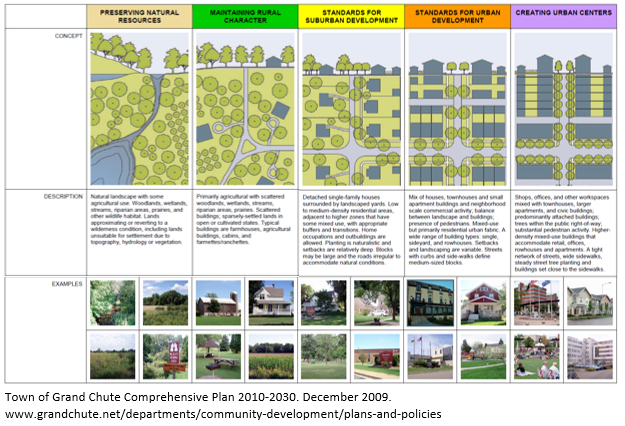Writing the Plan
A well-written plan is a valuable resource for citizens, local government decision-makers, consultants, and others. It can keep a planning process moving smoothly, advance policies, prevent misunderstandings, head off legal challenges, and even improve the public’s perception of government. The following tips are provided to produce plans that are clear, concise, readable and accessible to a wide variety of audiences.
Structure and Organization
Keep your plan to a readable length
If the plan is so long that nobody in your community will read it, it’s too long. Lengthy plans only confuse, overwhelm and discourage the reader.
Plans should be physically organized so that you can take away major points by skimming the plan or delve in for more detailed information. Consider the following tips to add structure and organization to your plan:
- Prepare an executive summary highlighting main points from the plan.
- Include a table of contents, glossary of key terms, list of acronyms, and topical index.
- Include page numbers and chapter titles on each page.
- Use bold text, larger font sizes, or colors to denote separate levels of text.
- Use bullets, text boxes, sidebars, illustrations and white space to break up large blocks of text and highlight key ideas.
- Include cross-references to related sections of the plan or other plans and regulations.
Language and Grammar
Plans must convey a large amount of technical information to a lay audience. Following are some tips to make your plan more readable and accessible:
- Use appropriate language, style and tone for your reader and purpose.
- Write at or below the eighth grade level.
- Keep sentences short and to the point. In most cases, limit yourself to one idea per sentence.
- State your main ideas clearly, answering who, what, where, when, why and how.
- Avoid planning jargon. Clarify technical terms where they must be used.
- Write active rather than passive sentences.
- Ensure agreement in lists.
- Review for spelling, grammar, word choice, and other common errors. Thorough proofreading is essential.
Graphics and Illustrations
Conversation test
After you have finished writing the plan, read it aloud. Ask yourself if your intended audience would understand what you are trying to say. If your writing is stuffy, wordy or impersonal, rewrite it.
Plans usually, but not always, consist of a combination of text and graphics. Graphics can be used to illustrate important points, summarize data, and convey large amounts of data quickly and concisely. They also add visual interest to a plan. Consider the following tips when including graphics in your plan:
- Include a balance of text and graphics to appeal to both visual and textual learners.
- Clearly label and explain each graphic in the text of the plan.
- Review all illustrations to make sure they are appropriate for the intended purpose and audience.
- Consider hiring a graphics consultant or editor if you have lots of illustrations.
Reviewing and Editing
Once you have completed your plan, have it independently reviewed. Select someone detached from the process that can offer constructive criticism on all aspects of the plan. This may be a planning consultant or professional editor. Also have citizens and laypersons read the plan for clarity. The review process should prompt questions that can be addressed in a revised draft.
Town of Grand Chute Comprehensive Plan 2010-2030

Some plans are heavily oriented towards policy and consist primarily of text. Others are oriented towards community design and the desired physical form of the community. These plans usually contain more maps, photographs and drawings. The following example from the Town of Grand Chute provides visual and text descriptions for five different desired patterns of development.




